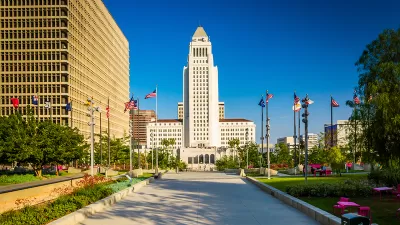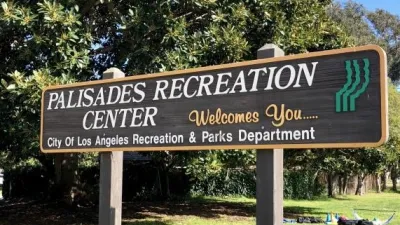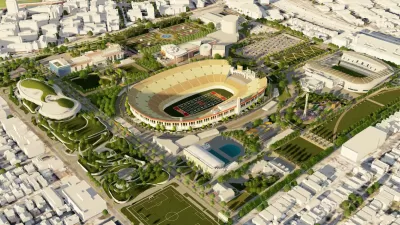A pointed editorial decries the over-regulation that has followed the renaissance of public spaces in Los Angeles.

"In recent years, Los Angeles has invested mightily in its public spaces in efforts to create a 'world class city,'" according to an op-ed by Laura Barraclough. "Great Streets Initiative, to the pop-up parklets and plazas being created along the L.A. River and all around the city, a certain energy around a revitalized public sphere pervades the air," adds Barraclough.
Despite these high profile efforts, however, Barraclough sees reasons to wonder whether the city is living up to its potential—or its promises. She writes: "From the loudly-hyped debut of Grand Park, to Mayor Eric Garcetti's Great Streets Initiative, to the pop-up parklets and plazas being created along the L.A. River and all around the city, a certain energy around a revitalized public sphere pervades the air. Much has been made of the design element of this revitalization, which is crucial, but little has been said of its legal architecture: the hundreds of municipal codes that regulate the city’s public spaces, often in exclusionary ways."
Barraclough lists a surprising inventory of regulations of these spaces, made in the name of public safety. Nearby jurisdictions are just as likely to enact exclusionary regulations. A new dog park in Beverly Hills, for example, will only be open to the city's residents.
After listing several reasons why such regulations unfairly exclude populations that need the space the most, Barraclough goes on to cite Jane Jacobs and William Whyte in presenting a case for more democratic use of public spaces.
FULL STORY: If L.A. wants to be a world class city, it needs to stop micromanaging its public spaces

Montreal Mall to Become 6,000 Housing Units
Place Versailles will be transformed into a mixed-use complex over the next 25 years.

Planetizen Federal Action Tracker
A weekly monitor of how Trump’s orders and actions are impacting planners and planning in America.

DARTSpace Platform Streamlines Dallas TOD Application Process
The Dallas transit agency hopes a shorter permitting timeline will boost transit-oriented development around rail stations.

Interactive Map Reveals America's “Shade Deserts”
Launched by UCLA and American Forests to combat heat-related deaths, the tool maps the shade infrastructure for over 360 U.S. cities.

Bicycles and Books — In Sacramento, Libraries Now Offer Both
Adult library card holders can check out e-bikes and e-trikes for up to one week.

Colorado Landfills Emit as Much Pollution as 1M Cars
Landfills are the third-largest source of methane pollution in Colorado, after agriculture and fossil fuel extraction.
Urban Design for Planners 1: Software Tools
This six-course series explores essential urban design concepts using open source software and equips planners with the tools they need to participate fully in the urban design process.
Planning for Universal Design
Learn the tools for implementing Universal Design in planning regulations.
City of Mt Shasta
City of Camden Redevelopment Agency
City of Astoria
Transportation Research & Education Center (TREC) at Portland State University
US High Speed Rail Association
City of Camden Redevelopment Agency
Municipality of Princeton (NJ)





























